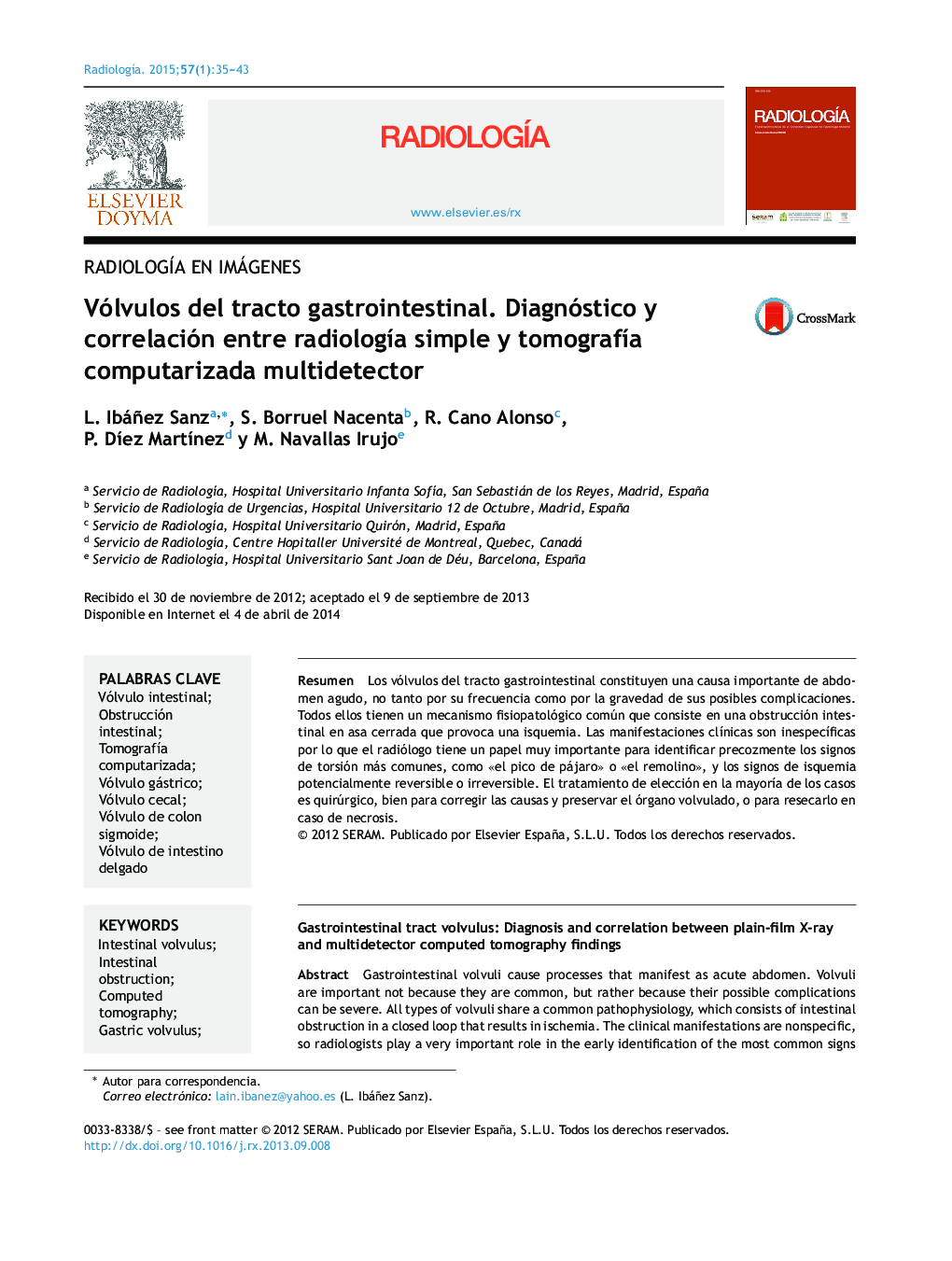| Article ID | Journal | Published Year | Pages | File Type |
|---|---|---|---|---|
| 4245198 | Radiología | 2015 | 9 Pages |
ResumenLos vólvulos del tracto gastrointestinal constituyen una causa importante de abdomen agudo, no tanto por su frecuencia como por la gravedad de sus posibles complicaciones. Todos ellos tienen un mecanismo fisiopatológico común que consiste en una obstrucción intestinal en asa cerrada que provoca una isquemia. Las manifestaciones clínicas son inespecíficas por lo que el radiólogo tiene un papel muy importante para identificar precozmente los signos de torsión más comunes, como «el pico de pájaro» o «el remolino», y los signos de isquemia potencialmente reversible o irreversible. El tratamiento de elección en la mayoría de los casos es quirúrgico, bien para corregir las causas y preservar el órgano volvulado, o para resecarlo en caso de necrosis.
Gastrointestinal volvuli cause processes that manifest as acute abdomen. Volvuli are important not because they are common, but rather because their possible complications can be severe. All types of volvuli share a common pathophysiology, which consists of intestinal obstruction in a closed loop that results in ischemia. The clinical manifestations are nonspecific, so radiologists play a very important role in the early identification of the most common signs of torsion. These include the «bird's beak sign», the «whirlpool sign», and signs of potentially reversible or irreversible ischemia. The treatment of choice in most cases is surgery, either to correct the torsion and save the organ or to resect it if it is necrotic.
